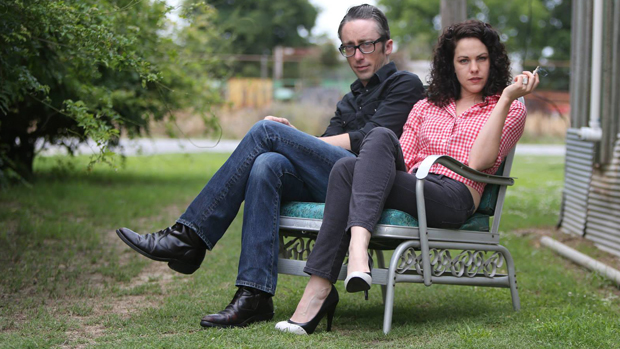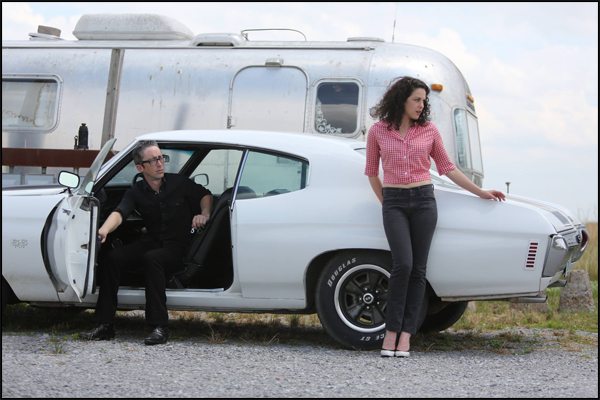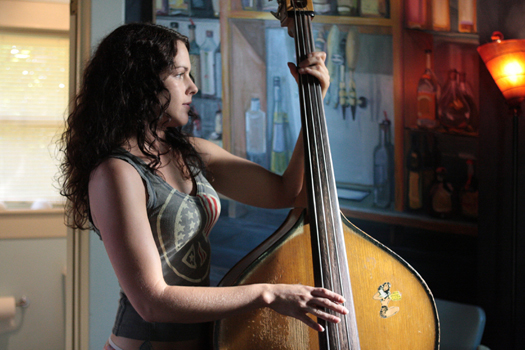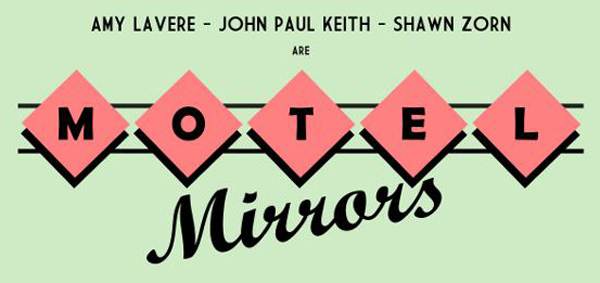
There’s something strange yet familiar about Motel Mirrors—like an old photograph of a place you think you know, but don’t quite remember having visited.
The casual chemistry between Amy LaVere and John Paul Keith makes it seem like this happens all the time—boy meets girl, boy plays girl some songs, boy and girl form band.
“It’s not that we really decided to have a band,” Keith tells it. “It’s just that by the time we got done having coffee she’d decided we were a band and was already booking shows for us. By the time I got home, we were exchanging ideas for band names.”
 Or, as LaVere says: “I’ve always wanted a duet partner—it was immediately obvious JP’s musical taste and aesthetic fit mine perfectly. I wasn’t going to let him get away.”
Or, as LaVere says: “I’ve always wanted a duet partner—it was immediately obvious JP’s musical taste and aesthetic fit mine perfectly. I wasn’t going to let him get away.”
If the collaboration was obvious to LaVere, the style was obvious to Keith: he wanted to emulate the classic 50s and 60s country duets —George Jones and Tammy Wynette, Conway Twitty and Loretta Lynn. The two dove into their respective record collections, searching for songs they could make their own.
 And so they became Motel Mirrors. The pair spent that winter with drummer Shawn Zorn, playing residency gigs at a few bars around Memphis, discovering their sound in those songs and developing original material. After a few months, LaVere approached Keith about an opportunity to record—she’d talked about the project with her label, Archer Records, and there was interest. They spent a few days at Music+Arts studio with Jeff Powell (Bob Dylan, The Afghan Whigs, Big Star, Tonic, Stevie Ray Vaughan), tracking mostly live, with very few added accoutrements to their stripped-down three-piece. Krista Wroten Combest dropped by to add some fiddle, Eric Lewis contributed a little lap steel, and they called it a record.
And so they became Motel Mirrors. The pair spent that winter with drummer Shawn Zorn, playing residency gigs at a few bars around Memphis, discovering their sound in those songs and developing original material. After a few months, LaVere approached Keith about an opportunity to record—she’d talked about the project with her label, Archer Records, and there was interest. They spent a few days at Music+Arts studio with Jeff Powell (Bob Dylan, The Afghan Whigs, Big Star, Tonic, Stevie Ray Vaughan), tracking mostly live, with very few added accoutrements to their stripped-down three-piece. Krista Wroten Combest dropped by to add some fiddle, Eric Lewis contributed a little lap steel, and they called it a record.
Three covers—Mickey & Sylvia’s “Dearest,” “Your Tender Loving Care” by Buck Owens and Susan Raye, and Red Foley’s “As Far As I’m Concerned”—blend seamlessly with originals by Keith and a co-write for the pair, “That Makes Two of Us.”
“One thing that is important to me about the project is that it’s not hokey or corny or campy or anything,” Keith says. “Sometimes when people try to do something with a classic country influence they can get hokey or self-righteous. I wanted to avoid all that and do something that was kind of romantic. The themes are classic—that’s stuff you don’t see a lot of anymore. I wanted to just explore that and do something that’s timeless.”
And timeless is a good word for it. If you put the needle down and close your eyes, you might mistake yourself for being somewhere else. At another time, in a different town. In a bar, listening to a band of strangers, whose voices are at once both fleeting and familiar. ![]()



